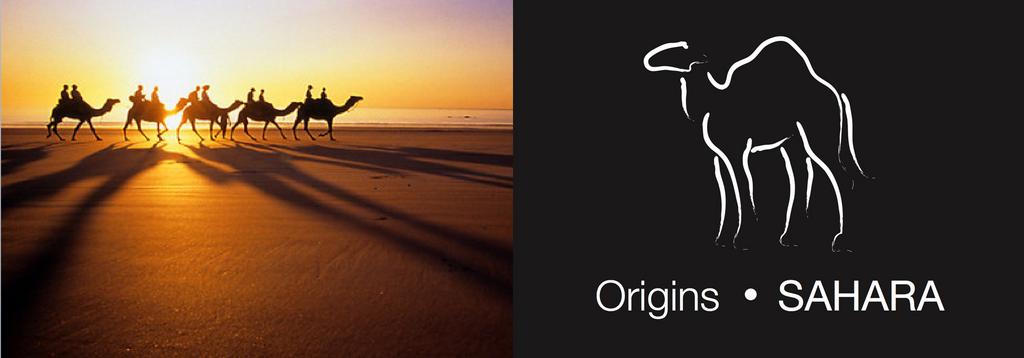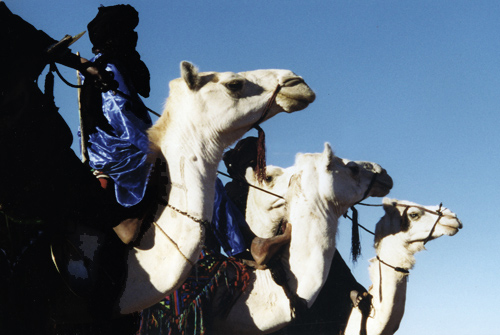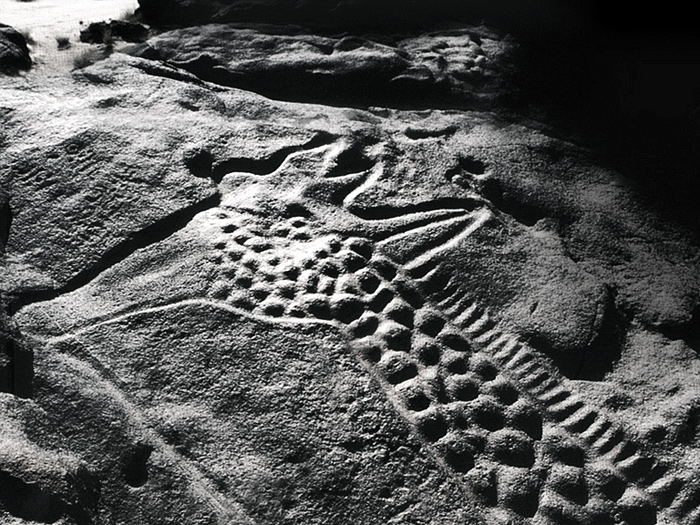



A new exhibition in South Africa will focus on the various facets that make up Africa's largest land space, the Sahara. The exhibition which is taking place at the Origins Centre in Johannesburg will explore the vast desert through the lens of its archaeological past.
Taking visitors on a journey - from the origins of the desert - to the culture and heritage of the people still using the trade routes of the Sahara today, such as the nomadic Tuareg people. Co-curator of the exhibition Lara Mallen said: "They are known as the blue people because of the deep indigo dye that would rub off on their skin from the veils worn mostly by the men."

At just over 9 million square kilometres the Sahara has not always been the dry and hot desert we recognise today, approximately 1.8 million years ago the Sahara was a savannah containing grass, animals and water. Exhibition curator Scott Mallen commented: "We can do all sorts of things to try and control the elements, but the Sahara hasn’t been tamed." Lara added: "In the next 15,000 years the Sahara will be green again, but for now it’s still a massive sea of sand."
The shifting sands of the Sahara also contain numerous rock art paintings and engravings, including what is thought to be the world's largest petroglyph, the Dabous giraffe carvings of Niger.
The two life size giraffe are one of the finest examples of ancient rock art in the world. Because of their artistic significance and placement within a palaeo-African context of a greener Sahara, the Bradshaw Foundation carried out a project of preservation that ensured the giraffe would be protected for future generations.

People attending the exhibition will get a chance to see some of the rock art paintings and drawings found in the Sahara. The curators of the Origins Centre exhibition hope the experience will allow people to escape their everyday lives and discover the depth of the Sahara. As Scott Mallen states: "This is your chance to plunge into this extraordinary realm of endless horizons and harsh beauty where, you may just find, reality can go beyond imagination."
The exhibition runs at the Origins Centre in Johannesburg until October 15. To find out more visit www.origins.org.za
by Bradshaw Foundation
Monday 03 February 2025
by Bradshaw Foundation
Friday 09 August 2024
by Bradshaw Foundation
Wednesday 24 July 2024
by Bradshaw Foundation
Thursday 04 July 2024
by Bradshaw Foundation
Monday 01 July 2024
by Bradshaw Foundation
Wednesday 20 March 2024
by Bradshaw Foundation
Tuesday 13 February 2024
by Bradshaw Foundation
Tuesday 13 February 2024
by Bradshaw Foundation
Thursday 01 February 2024
by Bradshaw Foundation
Tuesday 28 November 2023
by Bradshaw Foundation
Thursday 23 November 2023
by Bradshaw Foundation
Monday 20 November 2023
by Bradshaw Foundation
Tuesday 31 October 2023
by Bradshaw Foundation
Thursday 26 October 2023
by Bradshaw Foundation
Wednesday 20 September 2023
by Bradshaw Foundation
Monday 17 July 2023
by Bradshaw Foundation
Monday 03 February 2025
by Bradshaw Foundation
Friday 09 August 2024
by Bradshaw Foundation
Wednesday 24 July 2024
by Bradshaw Foundation
Thursday 04 July 2024
by Bradshaw Foundation
Monday 01 July 2024
by Bradshaw Foundation
Wednesday 20 March 2024
by Bradshaw Foundation
Tuesday 13 February 2024
by Bradshaw Foundation
Tuesday 13 February 2024
by Bradshaw Foundation
Thursday 01 February 2024
by Bradshaw Foundation
Tuesday 28 November 2023
by Bradshaw Foundation
Thursday 23 November 2023
by Bradshaw Foundation
Monday 20 November 2023
by Bradshaw Foundation
Tuesday 31 October 2023
by Bradshaw Foundation
Thursday 26 October 2023
by Bradshaw Foundation
Wednesday 20 September 2023
by Bradshaw Foundation
Monday 17 July 2023
Friend of the Foundation











